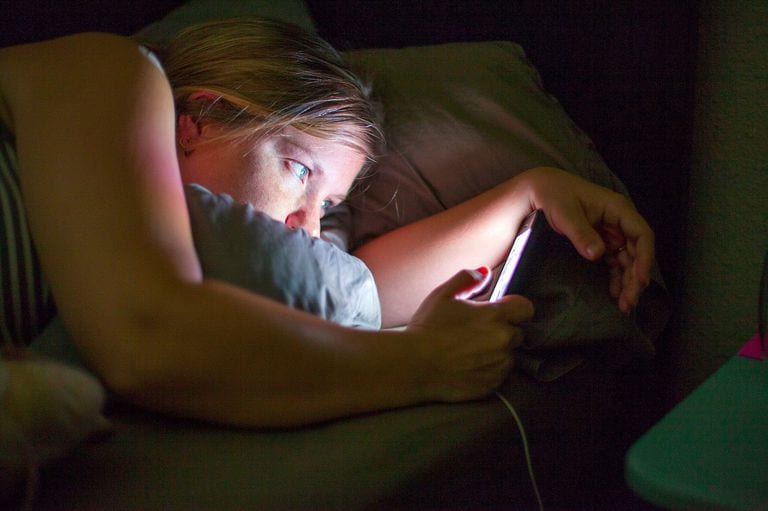Marissa Novak, 2018
Facebook has over 1.23 billion active users. On top of this, our younger generation does not know a world without the Internet (Blease, 2015). Answers are at their fingertips and the entire world is accessible from their bedroom. Popularity is based on the number of likes each Snapchat post receives and the numbers of followers one has on Instagram. What’s more, the sheer thought of missing out of the latest Facebook update is enough to cause genuine psychological and physical distress that there is now a name for this: FoMO, or the Fear of Missing Out. And for those caught up in this phenomenon, the fear is very real.
FoMO refers to the desire to stay continually connected with what others are doing. Nearly 75% of all young people describe the ‘social pain’ they feel when they think they are at risk of missing out on whatever their peers are doing (Baker, Krieger & LeRoy, 2016). This then becomes the driving force for social media use, which acts as a reward to decrease the negative feelings associated with FoMO, further reinforcing social media use as the medication required to subdue the FoMO symptoms. This in itself comes with its own set of concerns. However, the news is not all bad.
Social media use has been shown to have many positive benefits, including building connections and resources, which affect the psyche for both physical and emotional wellbeing (Vogel, Rose, Roberts & Eckles, 2014). After all, social connection is a basic human need. Studies have shown that a rich and diverse social life is an important source of emotional stability and satisfaction with life, and is linked to a reduced risk of cardiovascular disease and cancer (Deri, Davidai & Gilovich, 2017). Although times have changed, along with the ways in which many people socialise, there is little evidence to show that online relationships alone have the same benefits as physical ones.
The concern that is driving much of modern social research is whether social media does more harm than good. More and more, studies have found that the length of time spent on social media has been linked with depressive symptoms, low self-esteem and poor sleep habits (Underwood & Ehrenreich, 2017). The lack of sleep can be linked to the many interruptions during the night from alerts from friends who are also in the throes of FoMO. Further to this, Woods and Scott (2016) found that the emotional investment in FoMO means a struggle to relax at bedtime, showing that it is not just the duration of time spent on social media, but also the timing. Reduced overall levels of physical activity further contribute to depression and anxiety symptoms while exposure to digital screens just before bedtime can interfere with melatonin production and delay circadian rhythms. Adolescents who score high in FoMO report lowered moods and increased social media engagement. This leads to a cyclical loop with further depressive symptoms leading to FoMO susceptibility (Baker et al., 2016). Along with FoMO come the compulsive texting and the need to respond. While the physical problems are noted, including repetitive strain injury and reduced fine motor skills, it is academic functioning that is of most concern (Lister- Landman, Domoff & Dubow, 2017). This certainly paints a bleak picture for high-users of social media.
But what actually drives us to be so afraid of missing out on something? Over six decades ago, Leon Festinger (1954) reasoned that people learn about their own attitudes and abilities by comparing themselves to others in a theory described as social comparison. People start comparing things like their social lives, quality of relationships or material possessions to other people they deem to be better off than themselves to gauge a sense of where they fit into the world. This is referred to as upward social comparison. The risk of this is that it can lead to feeling dispirited or inferior (Vogel et al., 2014). With the advent of social media, social comparison has become so much easier. Simply scanning a friend’s Facebook page will give an idea of what parties they have attended, which car they have just purchased or where they went for their latest overseas holiday.
When people evaluate their social lives, they tend to do so with a distorted view of reality. After all, it will be the extroverts, the well-connected and socially active individuals who naturally grab people’s attention. These thriving social lives will, of course, be more visible than less active peers. The very act of social comparison will, therefore, make these individuals stand out. As a result, people will then overweigh easily accessible information in the form of an availability bias, making their own lives seem worthless in comparison.
We cannot ignore the real consequences of FoMO. We are comparing our lives to our peers through the screens of our smartphones, unable to look away in case we miss out on something. For some individuals, without knowing this information about others at the touch of their fingers on their smartphones, how are they meant to make these comparisons to see how well they are going on this life journey?
So, where to from here? How are we to be protected from the vice that is social media? The first step is to break free from the cycle. Try to accept a FoMO diagnosis, limit social media and avoid digital technology before bedtime as a start. The next step is to practice gratitude for what we have and for who we are. We need to learn to live in the moment and appreciate what life has given us. Finally, we need to start looking inward instead of outward. After all, this accessibility to information has not been around for long, and in the past what we didn’t know, didn’t hurt us. We need to put ourselves first again, stop letting our perception of other people dictate who we are and start examining our own personal values. It is time to start living your life, rather than missing out on what life has to offer others.
References
Baker, Z. G., Krieger, H., & LeRoy, A. S. (2016). Fear of missing out: Relationships with depression, mindfulness and physical symptoms. Translational Issues in Psychological Science, 2(3), 275-282. doi: http://dx.doi.org/10.1037/ tps0000075
Blease, C. R. (2015). Too many ‘friends,’ too few ‘likes’? Evolutionary psychology and ‘Facebook depression’. Review of General Psychology, 19(1), 1-13. doi: http://dx.doi.org/10.1037/gpr0000030
Deri, S., Davidai, S., & Gilovich, T. (2017). Home alone: Why people believe others’ social lives are richer than their own. Journal of Personality and Social Psychology, 113(6), 858-877. doi: http://dx.doi.org/10.1037/pspa0000105
Festinger, L. (1954). A theory of social comparison processes. Human Relations, 7, 117–140. doi: 10.1177/001872675400700202
Lister-Landman, K. M., Domoff, S. E., & Dubow, E. F. (2017). The role of compulsive texting in adolescents’ academic functioning. Psychology of Popular Media Culture, 6(4), 311-325. Doi: http://dx.doi.org/10.1037/ ppm0000100
Underwood, M. K., & Ehrenreich, S. E. (2017). The power and pain of adolescents digital communication: cyber victimisation and the perils of lurking. American Psychologist, 27(2), 144-158. doi: http://dx.doi.org/10.1037/a0040429
Utz, S., & Breuer, J. (2017). The relationship between use of social networking sites, online social support, and well-being. Journal of Media Psychology, 29(3),115-125. doi:10.1027/1864-1105/a000222
Vogel, E. A., Rose, J. P., Roberts, L. R., & Eckles, K. (2014). Social comparison, social media, and self-esteem. Psychology of Popular Media Culture, 3(4), 206-222. doi: http://dx.doi.org/10.1037/ppm0000047
Woods, H. C., & Scott, H. (2016). #Sleepyteens: Social media use in adolescence is associated with poor sleep quality, anxiety, depression, and low self-esteem. Journal of Adolescence, 51, 41-49. doi: https://doi.org/10.1016/j.adolescence.2016.05.008



Recent Comments